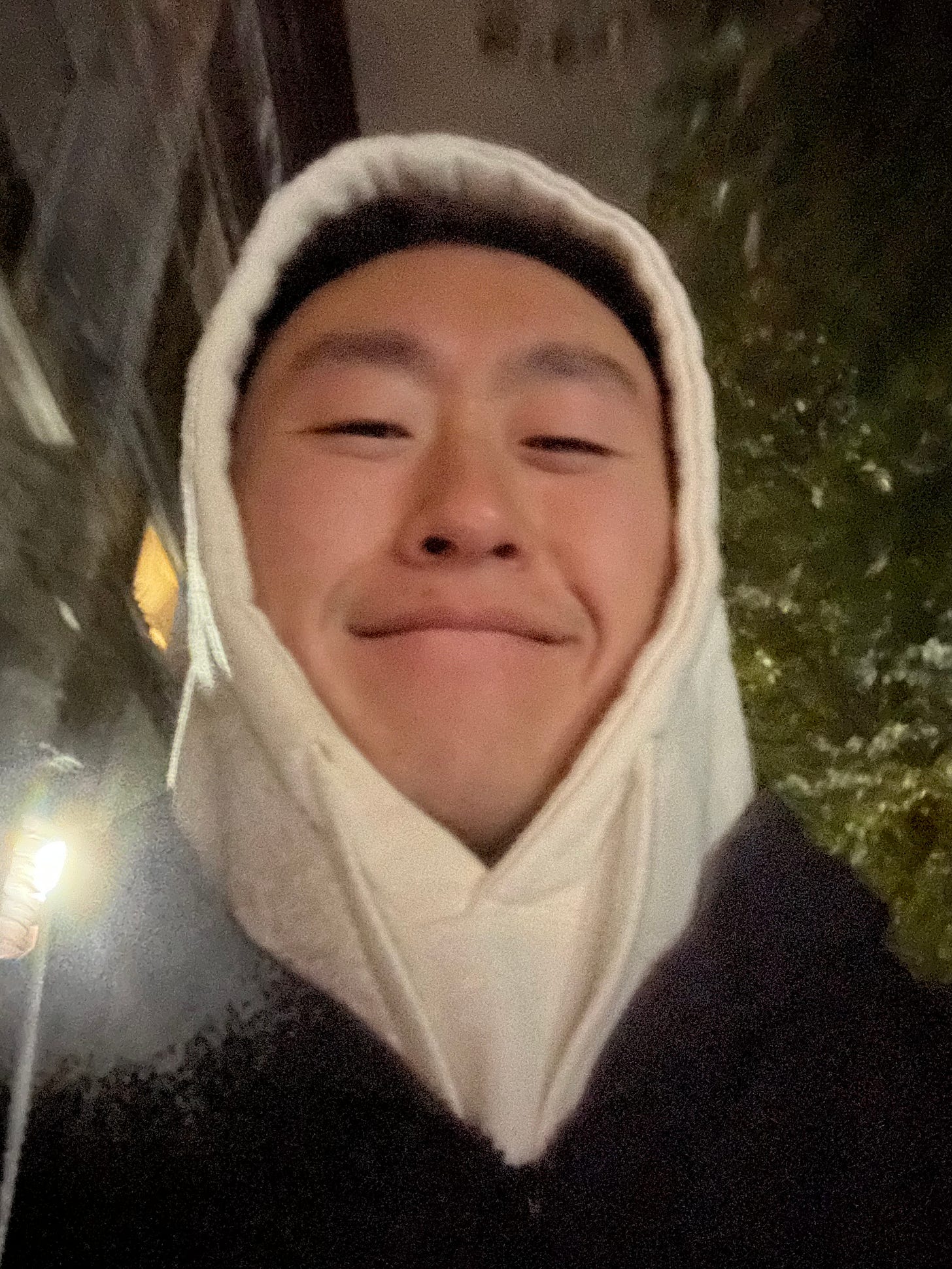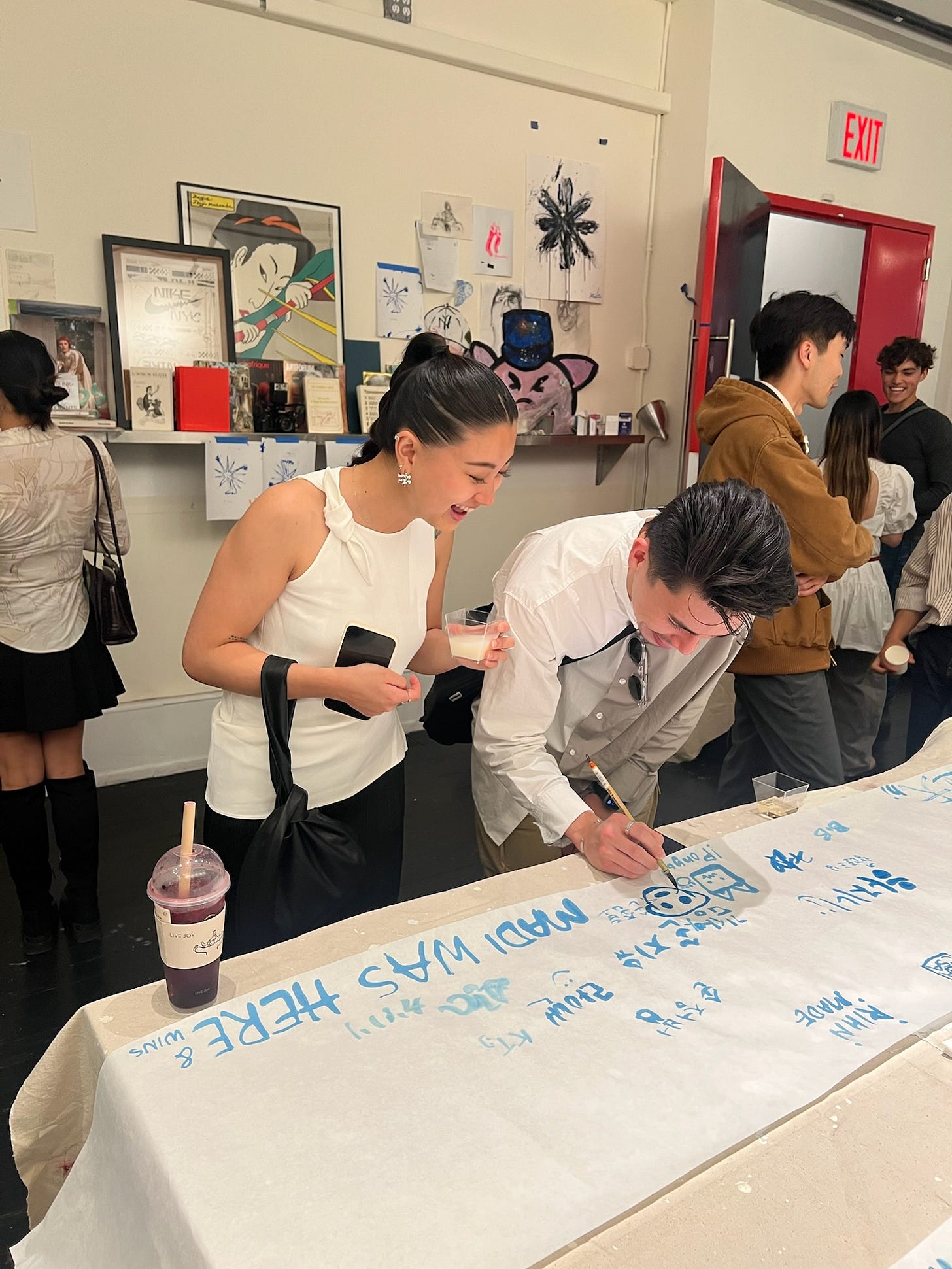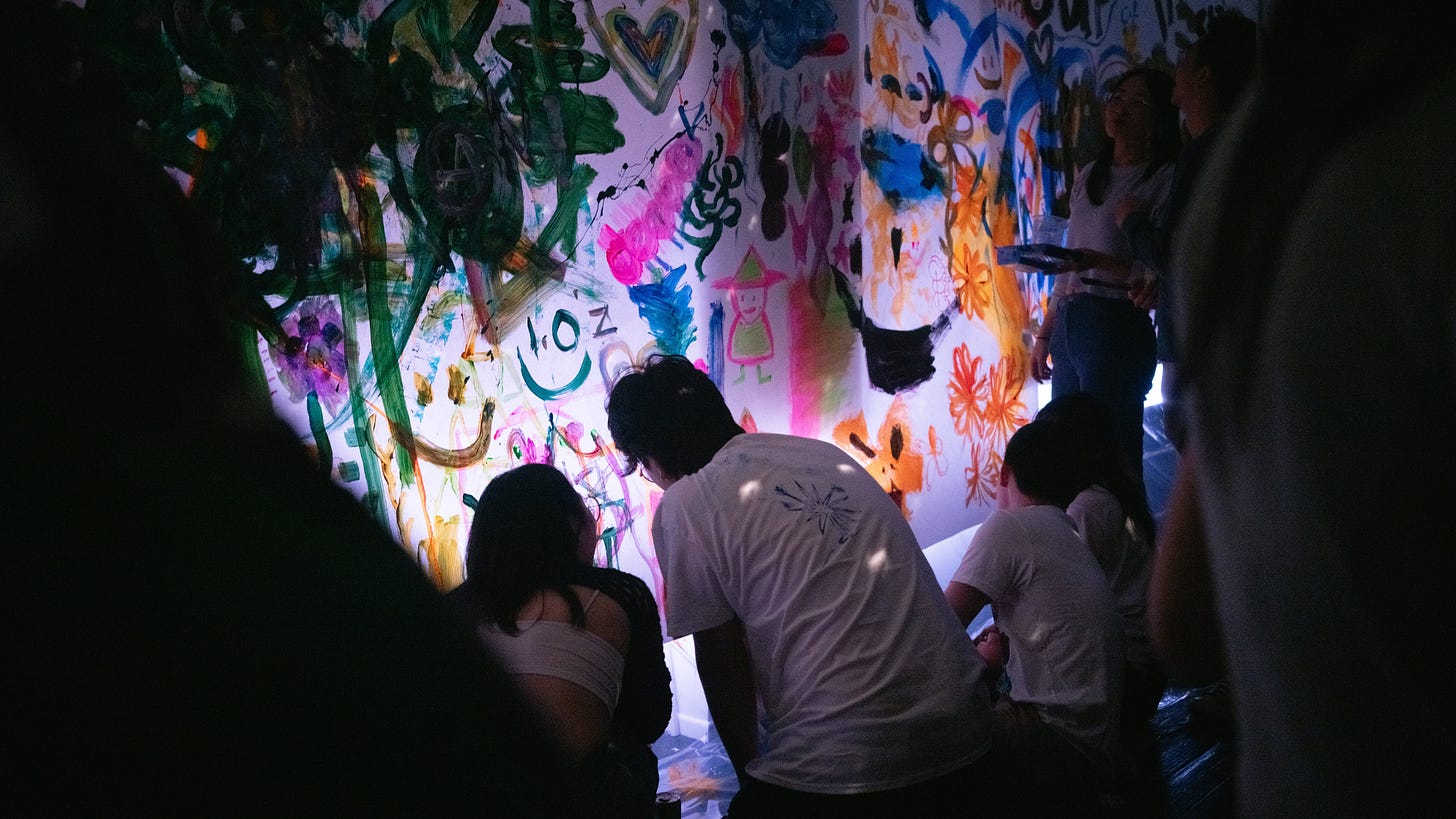Finding Flow State
Artist and designer, Daniel Park, opens up about finding flow state through play and creativity
I often think back on the near 2 hour conversation I had months ago with my friend Daniel, aka D Park. We both went through breakups over the past year that became catalysts for focusing on more creatively free versions of ourselves. Shamefully, I haven’t talked to D Park much since the interview, but if his latest newsletter is any indication, he had a far more productive summer of exploration than I did: he completed an art residency upstate New York, with one more coming up in Kyoto; taught himself 2-5-1 progressions on piano; launched an independent design studio called Embed after years of working for early-stage startups; andddd he announced that Flow State is officially back on November 16. D Park — I’m gonna text you right now.
Last time we talked you were just starting to plant seeds for a show and now it’s fully bloomed — your show is tomorrow. How did it all come together?
Spiritually, the idea formed last year. While reflecting on some goals for 2024, I remember writing somewhere in my notebook, “Have my first art exhibition.”
I didn’t have a real plan for it. But then in December I was going through a breakup and having a bit of an identity crisis. In search of some peace amidst this mental breakdown, I rediscovered an art movement I was introduced to in college, called Dansaekhwa (pronounced “dawn-say-qua”).
To be fully present and physical, I made a bunch of paintings in this style. After finishing them, I was like, “Wait, these are actually kind of nice.”
Dansaekhwa seems to be about trusting the process. As someone who struggles with perfectionism paralysis, how do you let go and lean into the mindfulness of it?
As artists, we all go through ebbs and flows of creativity. I think it’s tied to flow state. I've started to develop a thesis that you can enter a flow state if the process is mechanical enough. I try not to be focused on innovation but rather on the set of rules that I’ve put in place and finishing something to completion. It’s very meditative.
Have you been doing art full-time?
One aspect of my crisis is career-related. I treat any product I design as art, which is what I do for work. There’s an analogy I like: let’s say Andy Warhol finished a piece and then all of a sudden people start asking, “Can you make it bigger?” or, “Can you make this red, green?”. This is the process when you're building a product, but I treat building a product the same way I treat my art practice. There’s a lot of inner turmoil because, at some point, I no longer feel the same excitement for the product as I do for my art. As a piece, I’ve finished it, but to the company, it needs to be continuously improved.
Obviously, making thousands from art is the dream, but for now, there are things I need to do to support my practice and then there's my practice itself. If I start pouring my soul into the thing that will support my practice, my identity gets blurred, and I burn out really quickly. I’ve been trying to find that balance.
That’s the constant struggle of people that do creative work. How do you separate your art from your work? I'm still trying to figure that out too.
It’s been hard to balance and a constant struggle for me too. I’ll let you know if I make any breakthroughs.
How has this phase, where you’re focused on art, helped with the break up and career crisis?
In some ways, I don’t know yet. Either A, it’s a great coping mechanism, or B, it’s a really good distraction from my problems. That’s what I’m trying to figure out as I live my life.
But if my desire during a turbulent time is to create something or to produce art, what that tells me is that this is very important. Art is something I turn back to in the lowest points of my life because it brings me comfort and peace. There are so many self-help tips for when you’re feeling depressed: go for a run, listen to music, read a book, go for a long walk. Art hits those same notes for me.
The ‘lonely artist’ is a celebrated trope but you’ve been very intentional about building a community into your practice with your show and then also the newsletter that you started. Why is it important to you to have this community?
As artists, our craft is deeply personal. As such, we intentionally and unintentionally isolate ourselves due to our insecurities and deep rooted doubts, which has led to periods of extreme loneliness in my life. I’ve come to realize that type of life is not healthy, and it’s not that fun, honestly. While you get to dream up visions in your mind, during this isolation, you also start to believe the negative stories that you create for yourself.
The newsletter is an effort to help me not only share with a community in an honest and earnest way, but it’s also a good reminder for me as an artist who forgets to celebrate myself sometimes. You’re so obsessed with craft and creating the work and then moving on to the next project that you forget to look back and reflect. There’s people who will celebrate with you, and you don’t have to make art on your own all the time.
I wanted to talk to you about the series of events you put together called Flow State. What is Flow State?
Flow State started because of a couple of things.
First, I went to this design conference in Antwerp. It was in the middle of a warehouse and they had a bunch of graffiti markers all over the floor. What was so amazing about that experience was, and it's classic social anxiety, but if you have nobody to talk to, you don't want to just stand there. The space allowed me to enjoy being there without overthinking it — to enter a state of flow by picking up a marker and drawing.
That’s what I felt three years ago and then more recently, I was in this phase of wanting to DJ – I was producing music and I realized the same problem exists when you go to a party. Sometimes you don't want to dance, maybe because you're self conscious about your body or what people will think, but I wanted to have a dance party where you could flow by using your body or you could flow by being creative and painting on the walls and playing.
We had these huge canvases that we put on the wall. People were playing tic-tac-toe, drawing snakes, remixing the snakes, and copying each other. As we grow older we forget that play is important. Play is often the most pure and innocent form of creativity.
I feel that, as we get older, we also start to meet people through more structured spaces, through school, through work, or even if we go to a party or whatever, there's more norms and rules that we’re aware of when interacting with people. But with Flowstate, it sounds like creativity and play and art became a very easy way to start to interact with people without people even thinking about it — people were just acting freely. Unstructured play became a path to social connection and I love that. We need more of that.
It’s so beautiful. It’s true.
There was a person that brought a volleyball. They started painting it and then they just started playing volleyball in the middle of the party. It was sick.
I hope you do more events like that and this time, I’m going to try to be in New York for it.
Congrats on the show, BTW.
Thanks!








This is fantastic! I love this interview and found it very relatable. I'm also completely intrigued by Dansaekhwa and excited to explore this artistic movement more -- thank you!